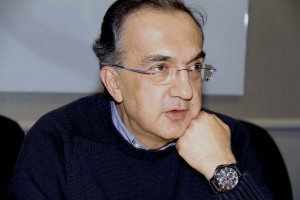Chrysler plans to pay back “every cent” of the money it was loaned by the federal government, said CEO Sergio Marchionne, and it will almost certainly do that before the IPO the executive said he wants to hold in the second half of 2011.
Chrysler is already planning to cover about $2.0 billion of the remaining $5.6 billion in loans from Washington, said Marchionne, who also serves as CEO of Chrysler’s Italian affiliate, Fiat. Meanwhile, the maker will soon pay down $600 million of the remaining $1.5 billion it owes the Canadian treasury.
 “It would be advantageous to repay it all” before an IPO, said the Canadian-educated Marchionne, during a meeting with reporters. “It would have better optics” in the eyes of potential investors – and would also make it possible for Fiat to increase its stake in Chrysler from the current 20% to a majority 51%.
“It would be advantageous to repay it all” before an IPO, said the Canadian-educated Marchionne, during a meeting with reporters. “It would have better optics” in the eyes of potential investors – and would also make it possible for Fiat to increase its stake in Chrysler from the current 20% to a majority 51%.
Earlier this week, Ron Bloom, the Obama Administration’s “car czar,” said that could not happen without complete recovery of the outstanding Chrysler loans.
Going firmly on the record when asked about long-standing hints about the timing of an initial public offering, Marchionne said, “I’d love to do it in the second half of 2011.” He meanwhile said he was “delighted” by the results of the record $23 billion General Motors IPO, last November, which will serve as a “snowplow,” making it easier for Chrysler to take itself public again.
The second half of this year will be a significant one for Chrysler. By then it will have a number of new key products either on sale or getting ready for launch, including the new Fiat 500 minicar, the flagship Chrysler 300 and others.
During a series of sessions, the normally tight-lipped Marchionne opened wide on questions about Chrysler’s upcoming product plans. Among other things, he said the maker plans to:
- Produce a Jeep Grand Cherokee-based SUV for Fiat’s Maserati brand, (likely using a Ferrari engine, according to well-placed sources);
- Add a pickup to the Jeep line-up that could use a crossover, rather than a truck-based platform;
- Completely replace or heavily revise the poorly-reviewed Dodge Nitro;
- Introduce a second Fiat product and a small Alfa-Romeo model to U.S. showrooms in 2012.
The executive said he saw it necessary to expand the maker’s “green” line-up, and added that, “I’m of the mindset some sort of hybrid solution is ideal.”
On the other hand, even though Fiat will offer a battery-electric version of the little 500 by 2012, Marchionne said he remained skeptical about vehicles running solely on battery power. He also stressed that it would, to his way of thinking, be a mistake to target specific technologies as the answer to the need to reduce fuel consumption and cut production of greenhouse gases.
“You cannot be technologically biased in the pursuit of that goal,” said Marchionne, suggesting the auto industry should be allowed to seek out whatever alternative might eventually prove most effective.
In his wide-ranging interview, the executive was asked about ongoing reports, from Europe, that rival Volkswagen AG would like to buy the Maserati brand.
“They may have made noises about making an offer,” Marchionne, wearing his traditional black sweater, said. “But they have not. And it is not for sale at any price.”
Nor, Marchionne later added, is Fiat looking to spin-off its Ferrari brand with a separate public offering.”
Marchionne has repeatedly said he believes that only the biggest makers will survive the eventual shake-out in the auto industry, and that this will require a manufacturer to produce a minimum 6 million vehicles annually. If anything, “We may have to take another look at that number by 2014,” and might revise it upwards, he said. Currently, Chrysler and Fiat together turned out about 3.5 million vehicles in 2010, and “We’ll be over 4 million by the of this year (and) cross 5 million by 2012.”
Due to improvements in its performance – and increased economies of scale – Marchionne later said Chrysler’s breakeven has dropped to about 1.5 million units, down from an earlier 1.65 million cited during the presentation of Marchionne’s 5-year business plan, in November 2009.
“We should be able to weather a downturn and not bleed to death when (the U.S. car market) is below double-digits,” he said, a low point the market hit in 2009, the year Chrysler went into Chapter 11.

